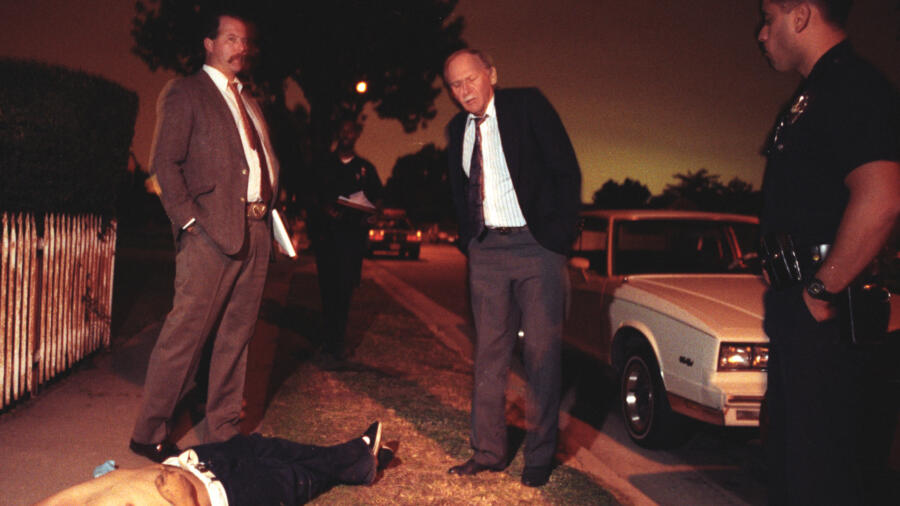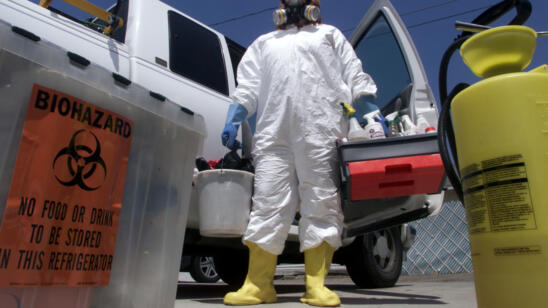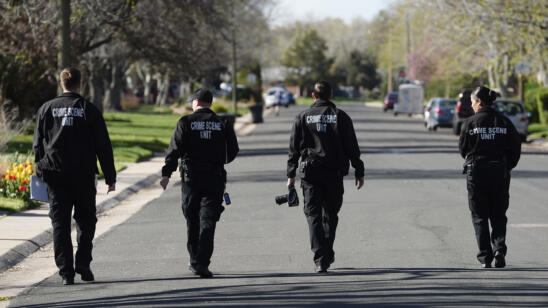Alexis Robie, Executive Producer of The First 48, reveals what he’s learned over the course of 14 years of making the show—which includes 584 cases, and 859 arrests—including the worst crime he ever covered.
Why are those first 48 hours so important?
Most, if not all, homicide detectives and experts would tell you that if you can’t find a lead within the first 48 hours, the chance of solving the case decreases dramatically. That’s when people’s memories are best. That’s when you have the opportunity of following the clues from clue to clue. As time goes on, evidence gets spoiled, witnesses disappear, and surveillance video is copied over.
What makes a great homicide detective vs. a great cold case investigator?
Good, active homicide detectives can become good cold case detectives, but it does not necessarily work the other way. This has a lot to do with how you are racing the clock when working an active case. You need to make decisions quickly. If you take too long to process the information you’ve gotten from a witness, a crime scene, or analyzing phone records, the suspect may be getting out of town. They might be harming somebody else.
In a cold case, you don’t have to rush, unless you get a new lead. Some of the best homicide detectives I’ve seen are extraordinarily aggressive and proactive and they work relentlessly. We’ve seen ones who literally work until they are going to drop out of exhaustion. Those are often the cases that get solved.
What’s the most haunting story you’ve covered?
In an episode in New Orleans called “Broken Home,” a man killed his child’s mother in front of the 4-year-old child. That was incredibly upsetting. As a parent, it was really hard to tell that story. The detectives were impacted so much by it. They felt so much. I really wanted to show that. It humanized them in a way that’s so important. And there was an unintended consequence: viewers raised money to buy a care package for the kid and sent it to the detective, who delivered it to the child. That, for me, made it all worthwhile.
What do viewers get out of seeing the show?
It’s good old fashioned fly-on-the-wall documentary work. It’s entirely real and authentic. Following a murder investigation, you have a true hero’s journey taking an investigation into the great unknown to try to find someone who does not want to be found. The tension is there; you don’t need to manufacture it. The conflict is there; you don’t need to create it. Unlike a lot of reality TV these days, this has actual drama. And I think people yearn for that. At heart, we’re talking about real drama about one of the most taboo subjects — taking another person’s life — and the people who are sacrificing so much to get to the bottom of it. The good that comes out of showcasing very positive investigative work has had a good residual effect on the communities and police relations. That, for me, is invaluable.
How do you pick where to film the show?
I don’t want to give away too much, but I will tell you that we have a wide range of knowledge of lots of law enforcement agencies in this country. After so many years of making this program, we’ve developed some incredible relationships. For people who wonder if we pick a type of victim or perpetrator to focus on: no. We go into as many locations as we can. We follow every case that we can. But not every case is going to work for TV. A lot of different elements are needed. If anything, we try for as much variety as possible, because, sadly, there are so many different types of people in this country impacted by violence.
Is there a moment when the detectives forget the cameras?
It depends on the individual. Some investigators couldn’t care less about cameras being there. Others will never forget. It’s in the tradition of true cinema verité documentary filmmaking, where you have the least amount of people at any given time to be as unobtrusive as possible.
Why did you do the digital spin-off The First 48: Inside the Tape?
These 15-minute spin off episodes are compelling shorter stories for viewers who cannot get enough of The First 48. They capture a very short period of time. Some are death investigations, not necessarily homicide, which gives a little more insight into the life of a homicide investigator.
Related Features:
Watch Full Episodes of ‘The First 48’
What’s It Really Like to Be a Crime-Scene Investigator?
Challenges and Surprises About Crime Scene Investigating


